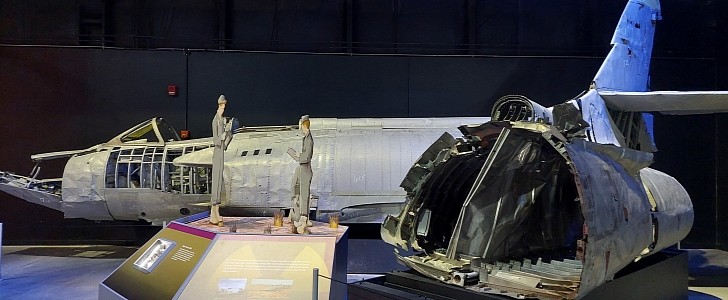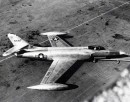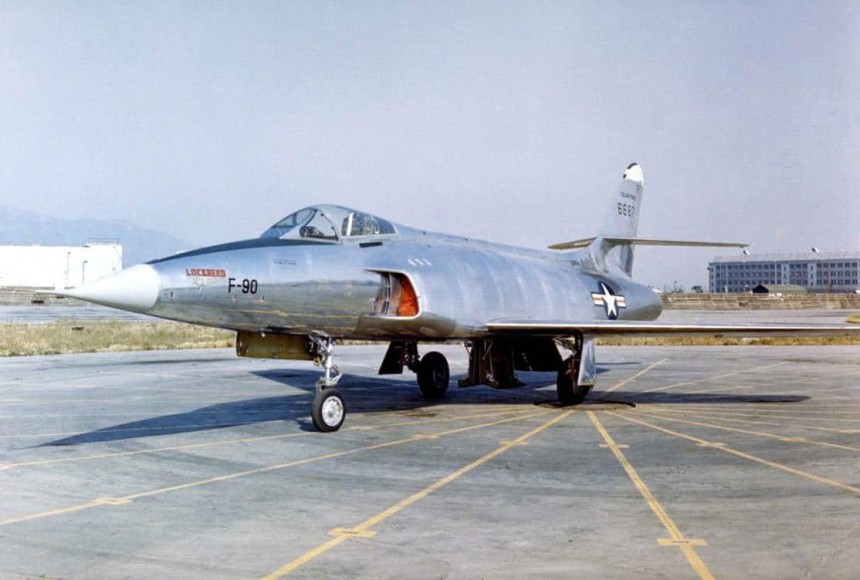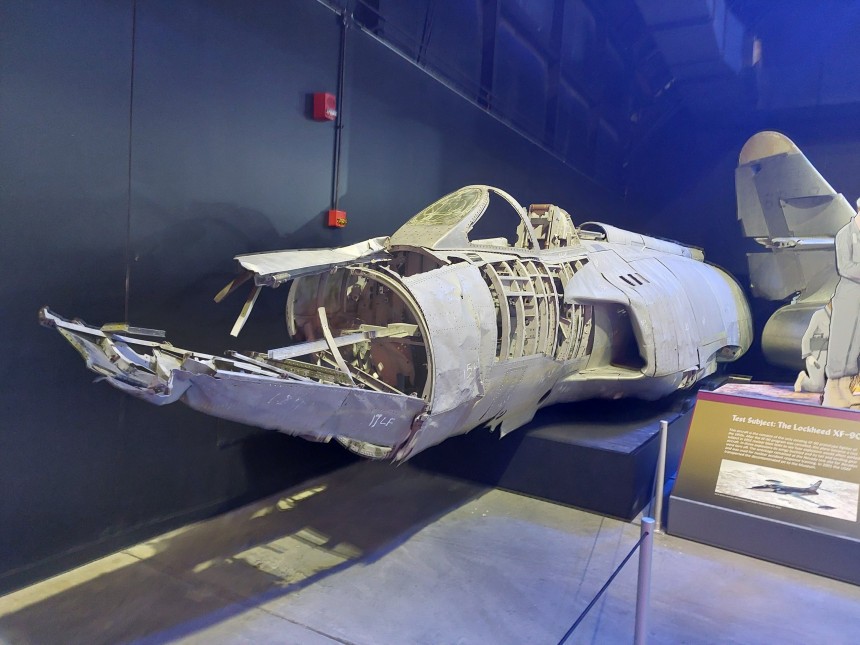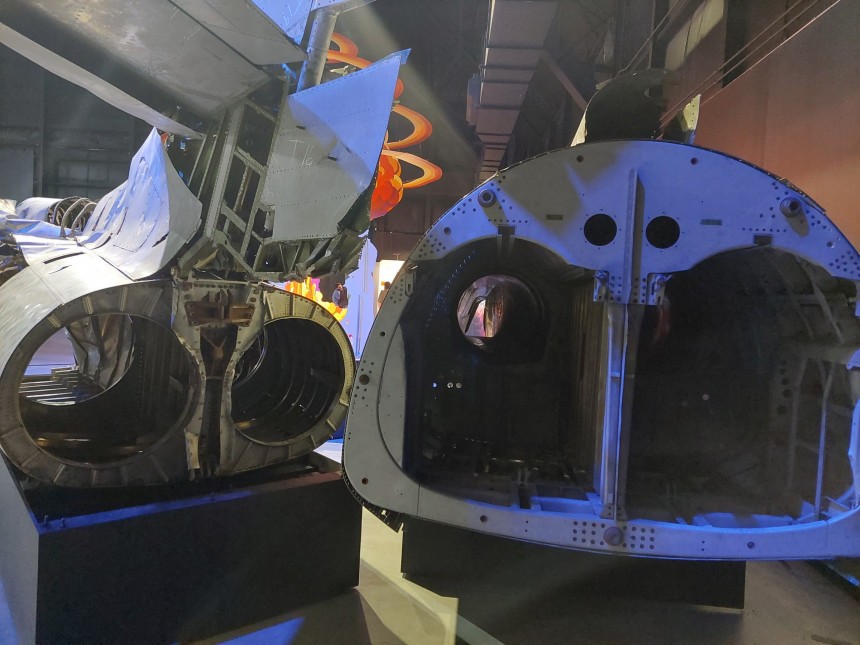We'd like to believe that every prototype military aircraft goes on to have a long and successful career. But especially in the early days of the Cold War, it simply didn't work out this way. But when a fighter jet doesn't cut it for combat, it doesn't always mean its days of usefulness are over.
The Lockheed XF-90 was a technological marvel in its day. It was the first American fighter jet to use afterburners for both of its twin engines and the first Lockheed aircraft ever to break the sound barrier. Pilots and engineers alike praised the jet for its remarkably sturdy airframe. Even so, this wasn't enough to make the fighter viable in an upcoming conflict.
With the War in Korea looming on the horizon, the contract for a long-range penetration fighter and bomber escort was instead given to the McDonnel XF 88 Voodoo. That plane would go on to be re-named the F-101 Voodoo while in production.
With the contract lost and two prototypes now sitting retired, the time had come for the XF-90s to assume their new roles: serving as airframes that would test how much stress a fighter jet could endure before destruction.
The first airframe, serial number 46-0687, was tested to its breaking point at the National Advisory Committee for Aeronautics laboratory in Cleveland, Ohio. Its sister plane, serial no 46-0688, was transported to an explosive date with destiny.
The late '40s and early '50s saw the dawn of the nuclear era. The atomic bombings of Hiroshima and Nagasaki proved how devastating of a weapon the Americans had at their disposal. But in the early days of the nuclear age, more testing was needed to understand the sheer magnitude of the destruction now possible with just one bomb.
And so, the remaining XF-90 airframe was transported to a then top-secret testing facility within the 1,350 square miles Nevada National Security Site famous for its atomic bomb tests. Here, nuclear tests could be conducted with little to no chance of collateral damage to civilian infrastructure or meddling by Soviet spies.
The XF-90 was stationed in an area of the test site called Frenchman Flat, a dry lakebed within the test site that served as the perfect mock-airstrip for the test the military had planned. In 1952, the airframe endured a brutal onslaught of three separate nuclear blasts similar in size to those seen in the last days of World War Two, if not even larger.
By the end of testing, little remained of the stricken fighter. But amazingly. the aircraft was not vaporized and reduced to atoms after three consecutive nukes to the face. The remains of the once-proud fighter jet lay on the grounds of Frenchman Flat. In staunch defiance of a test program that essentially saw the plane given its last rights.
The wreck was so mangled by the explosion that it takes getting over some tricks of the eye to identify it as the mangled remains of an American fighter jet. The plane was destined to spend the next 50 years getting acclimated to the heat and the sands of the Nevada desert.
The US Air Force largely ignored the presence of the remains of the second XF-90 until 2003, when it was finally moved from its resting place in Frenchman Flat. The plane was then transferred to the grounds of Wright-Patterson Air Force Base in Dayton, Ohio. Also, the sight of the National Museum of the United States Air Force.
Here, the aircraft's remains were decontaminated of radiation, and each rivet was removed to purge them of radioactive sand. Its frail wings were removed entirely. Today, the remains of the XF-90 have a permanent display among other famous exhibits of the Cold War.
At this exhibit, museum-goers get to marvel at firsthand proof of what can happen when an aircraft is subjected to the most powerful explosions known to man. What's especially notable about the exhibit is that even after three atomic tests and five decades in the desert sun, the bulletproof front windscreen hadn't melted or shattered into thousands of pieces. The XF-90 was praised in its day for its durability, and it sure does show here.
With the War in Korea looming on the horizon, the contract for a long-range penetration fighter and bomber escort was instead given to the McDonnel XF 88 Voodoo. That plane would go on to be re-named the F-101 Voodoo while in production.
With the contract lost and two prototypes now sitting retired, the time had come for the XF-90s to assume their new roles: serving as airframes that would test how much stress a fighter jet could endure before destruction.
The late '40s and early '50s saw the dawn of the nuclear era. The atomic bombings of Hiroshima and Nagasaki proved how devastating of a weapon the Americans had at their disposal. But in the early days of the nuclear age, more testing was needed to understand the sheer magnitude of the destruction now possible with just one bomb.
And so, the remaining XF-90 airframe was transported to a then top-secret testing facility within the 1,350 square miles Nevada National Security Site famous for its atomic bomb tests. Here, nuclear tests could be conducted with little to no chance of collateral damage to civilian infrastructure or meddling by Soviet spies.
The XF-90 was stationed in an area of the test site called Frenchman Flat, a dry lakebed within the test site that served as the perfect mock-airstrip for the test the military had planned. In 1952, the airframe endured a brutal onslaught of three separate nuclear blasts similar in size to those seen in the last days of World War Two, if not even larger.
The wreck was so mangled by the explosion that it takes getting over some tricks of the eye to identify it as the mangled remains of an American fighter jet. The plane was destined to spend the next 50 years getting acclimated to the heat and the sands of the Nevada desert.
The US Air Force largely ignored the presence of the remains of the second XF-90 until 2003, when it was finally moved from its resting place in Frenchman Flat. The plane was then transferred to the grounds of Wright-Patterson Air Force Base in Dayton, Ohio. Also, the sight of the National Museum of the United States Air Force.
Here, the aircraft's remains were decontaminated of radiation, and each rivet was removed to purge them of radioactive sand. Its frail wings were removed entirely. Today, the remains of the XF-90 have a permanent display among other famous exhibits of the Cold War.
